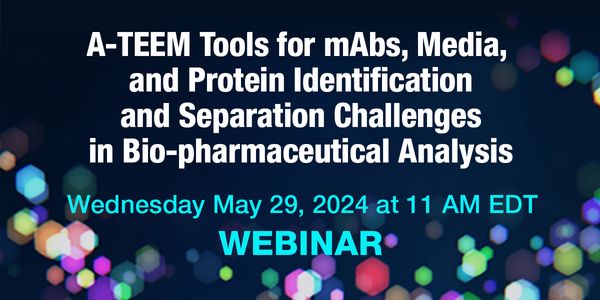Co-Founder and Chief Scientific Officer, PathogenDx
BIOGRAPHY

FEB 19, 2020 11:00 AM PST
Emerging as the New Gold Standard in Quality & Safety: Parallel DNA Based Cannabis Testing of Multiple Microbes
Sponsored by: PathogenDx
Speakers
-
Benjamin A. Katchman, Ph.D.
Principal Scientist, PathogenDxBIOGRAPHY
Event Date & Time
DATE: February 19, 2020
TIME: 11:00am PST, 2:00pm EST
Abstract
This WebNR will focus on the key attributes of DNA-based microbial testing, which can be usefully broken into 4 Basic Principles.
Don’t Ask, Don’t Tell: Why it is important to test (at high resolution) for individual pathogen species vs the historical practice of (low resolution) testing by plate culture for “Class Indicator Organisms”? For example, most gram negative enterobacteria are harmless (but Salmonella enterica and E coli O157) are not. Similarly, most fungal contamination is harmless including that from most Candidae, but C auris is very pathogenic. Historically, based on plate based culture, such detailed speciation was difficult in many cases. Given that DNA testing can deliver, with very little specialized user expertise, such speciation and sub-speciation among bacteria and fungi, the argument can now be made that testing for such “high resolution” speciation via DNA methods should now be viewed as a “must-have” in cannabis, food, agriculture and environmental screening applications.
To Enrich or Not Enrich? Historically, a trade-off (devil’s bargain) has been made based on the desire to increase the sensitivity of microbial detection, by the use of non-specific fluid-phase microbial enrichment culture, prior to plate-based or other methods, in the face of the risk of distorting the original microbial population. That well know risk is based on the (inevitable) reality that many microbes in a complex population will grow more poorly than others in any single medium chosen for such “Enrichment”. Given the nearly theoretical (single molecule) sensitivity of PCR-based DNA testing, it can now be shown that, in most cases, fluid phase enrichment is no longer required to detect rare microbes in a population. Based on the nearly perfect sensitivity of PCR and the fact that DNA testing can be performed on very small-volume samples, is it now possible to couple large-volume-to-small-volume sample concentration technology to the intrinsic, single molecule, sensitivity of PCR, thus enabling the faithful detection of all microbes in a population by DNA testing without “Enrichment” of any kind. In the face of that new capacity for un-enriched, DNA based microbial population analysis, the argument can be made that the (distortive) historical practice of “Enrichment” is no longer necessary (at least in small sample volume <25 grams??).
Live vs Dead? In general, DNA testing detects the presence of all contaminating microbes in a sample: those presently alive, those which used-to-be alive, those which are culturable and those which are hard to culture. In contrast, the historical practice of plate-based culture can only detect a sub-set of the resident microbial contamination in a sample: namely those microbes presently alive and also easy to culture. Having said that, plate based culture has been in existence since the late 19th century and its limited capacity for “live+culturable” microbial detection has, by default, become the “Gold Standard” or “Base Truth” for the whole field of microbial analysis. Given that the residue delivered from dead microbes or “hard to culture” microbes in a sample (i.e. bacterial endotoxins and fungal mycotoxins) present, especially in cannabis and much of environmental testing, much of the pathogenic health risk to man, it is now reasonable to ask if DNA testing can now, at least for cannabis testing, be elevated to the new “Gold Standard” or “Base Truth” for microbial pathogen analysis, with plate culture (which detects only a subset of the resident microbial load) relegated to a confirmatory role. That emerging (primary) role for DNA-based microbial testing is additionally reinforced by new auxiliary technology which can be used to eliminate cell-free DNA from a microbial population, especially that which had arisen from microbial cell death or biofilm formation. That emerging ability, especially in cannabis, to focus DNA-based microbial testing on only the cellular DNA in a sample, additionally reinforces the seminal role that DNA based microbial testing can now play in safety testing for the cannabis supply chain.
qPCR, PCR+Microarray, PCR+NGS: In the beginning of the PCR technology era in the late 1970s, it was quickly observed that PCR could change the world of microbiology. A correctly-chosen forward/reverse primer pair could amplify even a single molecule of DNA 10+9 fold, thus delivering enough of its PCR-amplified product to be detected by simple dye staining. Quickly thereafter, it was realized that any DNA with ends complementary to such a primer pair would be amplified by PCR, thus making it impossible, via simple PCR and dye staining, to distinguish closely-related microbial gene variants, especially the gene variation which can be used to distinguish closely-related members of the same microbial family. To enable a more detailed approach to PCR analysis of closely-related gene variants, two new PCR-based technologies were invented at about the same time in the 1990s: TaqMan qPCR and PCR coupled to a microarray. Two decades later (@2010) a third technology was added to the tool set: PCR coupled to Next Generation Sequencing (NGS). All three are based on more less the same sort of initial microbial PCR reaction, which is then coupled to either the interrogation of the PCR product by hybridization to a sequence specific DNA probe (in both qPCR and in microarrays) or coupled to a secondary amplification of individual DNA molecules, followed by sequence analysis of each type of molecule (by NGS). The three technologies are all useful but deliver a continuum of analytical content, which is best catalogued in terms of the number of (microbial) gene variants which can be tested per reaction.
Practical Analytical Content Limit
- qPCR: analysis of less than 5 DNA variants within a gene region;
- PCR-Microarray: analysis of less than 50 DNA variants within a gene region;
- PCR-NGS: analysis of less than 500 DNA variants within a gene region.
Each differing significantly in terms of their absolute sensitivity.
Practical Sensitivity Limit
- qPCR: 50 gene copies per reaction
- PCR-Microarray: 1 gene copy per reaction
- PCR-NGS: 1 gene copy per reaction
Each differing significantly in terms of sample preparation requirements.
Practical Sample Purification Requirements
- qPCR: requires column or magnetic bead based DNA purification
- PCR-Microarray: no purification required for PDx platform
- PCR-NGS: requires column or magnetic bead based DNA purification
Each differening in economics in terms of Total Cost per Sample test (eg Cannabis flower w/ 6 organisms)
- qPCR: >$50 -to-<$80 per sample
- 2) PCR: Microarray >$25-to-<$35 per sample
- 3) PCR: NGS >$100 per sample
Learning objectives:
- Explain the basic principles of widely-used DNA-based microbial testing methods: qPCR, Sequencing, Microarrays.
- Discuss the origins of intrinsic sensitivity and specificity differences among DNA based microbial testing methods vs culture based testing.
- Discuss the information content difference obtained from microbial DNA testing methods vs traditional plate culture.
Webinars will be available for unlimited on-demand viewing after live event.
LabRoots is approved as a provider of continuing education programs in the clinical laboratory sciences by the ASCLS P.A.C.E. ® Program. By attending this webinar, you can earn 1 Continuing Education credit once you have viewed the webinar in its entirety.
You May Also Like
MAY 29, 2024 | 8:00 AM
A-TEEM spectroscopy is an emerging technique with huge potential for QC laboratories in the pharmaceutical and biopharmaceutical industries. We present a set of tools for A-TEEM spectroscopy...
DEC 10, 2024 | 9:00 AM
To-date, proteomic analysis has been severely limited in scale and resolution. Analyzing protein samples using an intact, single-molecule approach holds th...
De novo gene synthesis and protein expression are established technologies that can give access to nearly any target DNA or protein sequence, allowing for engineering of biologics. In this p...
Speaker:
Claudia Chiocchini
Presented at: Cancer Research & Oncology Virtual Event Series 2024
Sponsored By: Thermo Fisher Scientific
Sponsored By: Thermo Fisher Scientific
MAY 29, 2024 | 9:00 AM
C.E. CREDITS
Histology laboratorians in the research world move fast, but those who perform cryosectioning know that these particular tissues require lighting speed and precision. Cryosectioning is the a...
JUN 19, 2024 | 8:30 AM
Join us for an illuminating webinar as we delve into the realm of open automation with Inpeco, the global leader in Total Laboratory Automation. Discover how their groundbreaking s...
FEB 19, 2020 11:00 AM PST
Share
Emerging as the New Gold Standard in Quality & Safety: Parallel DNA Based Cannabis Testing of Multiple Microbes
Sponsored by: PathogenDx
Loading Comments...
Please update your information
Certificate of Attendance
Thank you for choosing Labroots. Please note that a Certificate of Attendance does NOT count towards Continuing Education Credits.
DOWNLOAD CERTIFICATE
DOWNLOAD CERTIFICATE
You must watch the entire webinar to receive your certificate of attendance.
You must attend the event before receiving your certificate of attendance.
You must register for the event first.
Certificate is no longer available for this event.
You must be logged in to retrieve your certificate.






